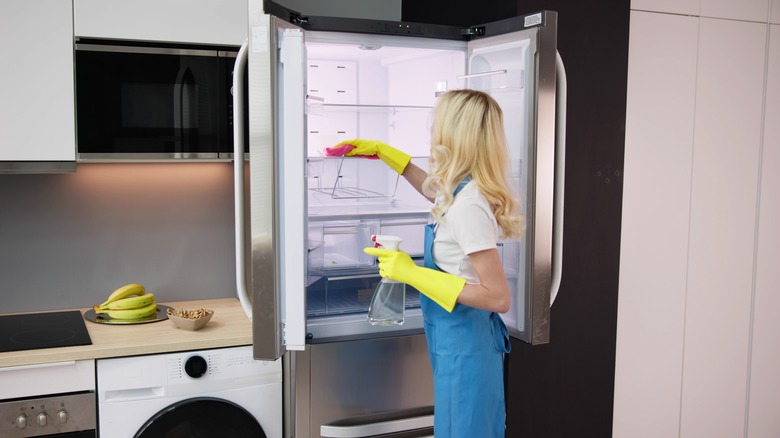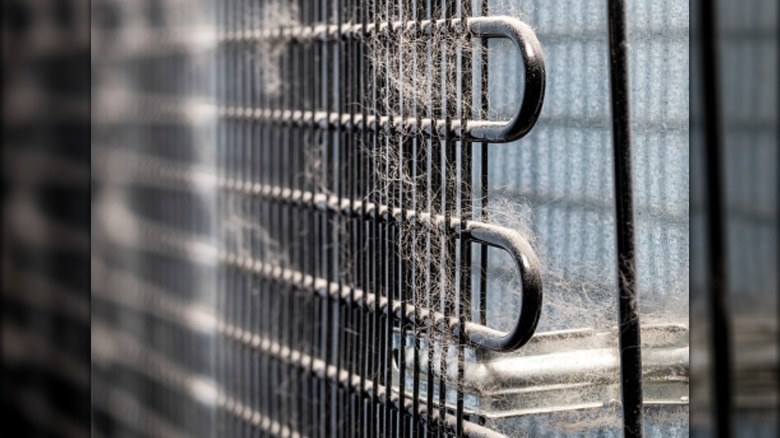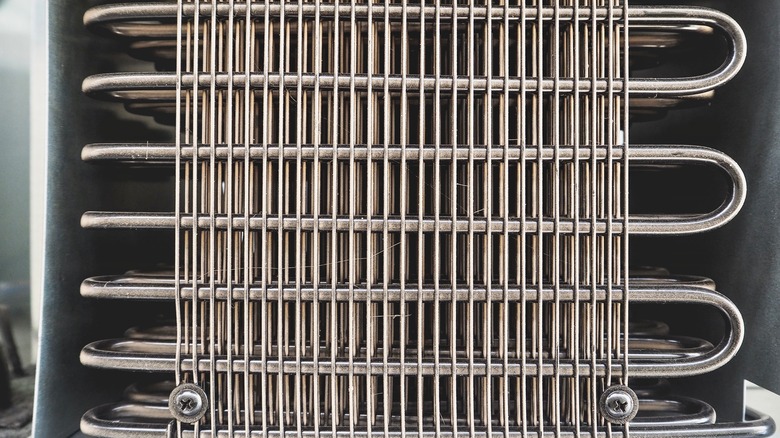When's The Last Time You Cleaned Your Refrigerator Coils?
No matter the feat, there are always forces in the background making it happen. In the daily push to get food on the table, you can't forget the ever-present, ever-dependable refrigerator. Your meal-prepping, snacking, and late-night ice cream scooping all come to a grinding halt if your fridge is not functioning as it should. One of the key, yet often overlooked, tidy tips to maintain a cleaner refrigerator is dusting your refrigerator coils.
If you have not cleaned this part of the appliance in the past six months to one year, it behooves you to make it a priority. Those coils — which are an important component in cooling and condensing refrigerant — are quick to trap dust, dirt, pet hair, and debris. Not only is that a little gross, but it also affects how your fridge runs. When the coils get really loaded up, they do not work as efficiently.
Basically, this makes your fridge have to work harder, which, in turn, can result in higher energy bills and quicker deterioration of the machine. The good news is that refrigerator coils are fairly straightforward to clean. All you need is a vacuum with a handheld attachment and a buddy to help you safely move the appliance.
Where are the refrigerator coils located?
Always consult the refrigerator's handbook for the specifics on location and cleaning requirements before getting down to the dirty work. If you did not happen to save the paper booklet, you should definitely be able to find a copy online on the manufacturer's website.
For safety, be sure to unplug your fridge before you start poking around. The coils can be located on the top, back, or bottom of the fridge. Sometimes they are behind a kickplate on the lower front of the fridge or guarded by a panel. The coils themselves look like grates, U-shapes, or metal filters, depending on your particular model. Some modern refrigerators do not require the coils to be cleaned because of where they are located and how they are protected. However, many others do.
You may need to move the fridge away from the wall to gain access. Once you have located the coils, remove the covering if necessary. Typically, the panel will simply lift off or it can be easily removed with a screwdriver.
How to clean refrigerator coils
If you have one, the brush attachment on your vacuum works great for dislodging all that dust. If you do not have that particular piece, any narrow, handheld extender will work. You can also use a soft cloth to wipe down the coils, and then use the vacuum again to suck up debris that falls.
If the dirt is really stuck on there, use a soft-bristled cleaning brush, toothbrush, paintbrush, feather duster, or a tool meant for cleaning box fans. A can of compressed air can be quite helpful for hard-to-reach places, but keep in mind that this will cause the dust to be thrown into the air and surrounding surfaces. It could be more trouble than it is worth. When you are finished, wipe down the protective panel and affix it back over the coils before plugging your fridge back in. Repeat this process once or twice a year, or more often if you have shedding pets.
This is a great time to just go ahead and do a full-on deep clean. Pop your refrigerator shelves in the dishwasher for an odor-busting clean, and use a towel soaked in hot water to clean your freezer without defrosting it first. With routine maintenance, you can keep this essential kitchen appliance spotless and functioning properly.



